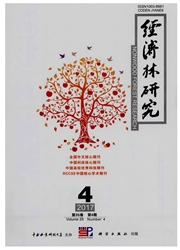

 中文摘要:
中文摘要:
为了掌握市场上林源中药饮片中二氧化硫的残留情况,从而为林业资源的利用、林药资源加工技术规范的制定与执行以及林产品的安全监测提供参考依据,采用在国家标准的基础上自行改进的检测方法,对从市场上收集到的31种林源中药饮片中二氧化硫的残留量进行了检测。结果表明:未检出二氧化硫的有3种;二氧化硫含量〈30 mg/kg的有20种;其含量为30~150 mg/kg的有3种;其含量为151~400 mg/kg的有3种;其含量〉400 mg/kg的有2种。根据《中华人民共和国药典》中对中药饮片残留量的限制规定和文中的检测结果,黄柏、牡丹皮、合欢皮、陈皮、八角茴香等中药饮片的二氧化硫残留量超标,建议在林产品利用和监管时要特别加以注意。
 英文摘要:
英文摘要:
To grasp SO2 residue status in traditional Chinese medicine from forest in market, and to provide some references for utilizing forest resources, formulating and implementing the processing technical specifications of forest medicine resources, and monitoring safety of forest products, SO2 residue in 31 kinds of Chinese medicine from forest were determined by an improved method based on national standards. The results showed that SO2 residues in 3 kinds were not detected, those in 20 kinds were less than 30 mg/kg, those in 3 kinds were between 30-150 mg/kg, those in 3 kinds between 151-400 mg/kg, and those in 2 species were more than 400 mg/kg. Based on the results and restrictions of SO2 residues in Chinese Medicine from Pharmacopoeia of the People's Republic of China, SO2 residues in amur cork, tree peony bark, silktree albizzia bark, dried tangerine peel, Chinese star anise, and so on, were excessive, and that should be focused in utilization and supervision of forest products.
 同期刊论文项目
同期刊论文项目
 同项目期刊论文
同项目期刊论文
 期刊信息
期刊信息
